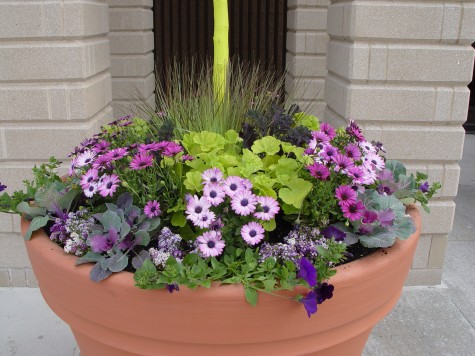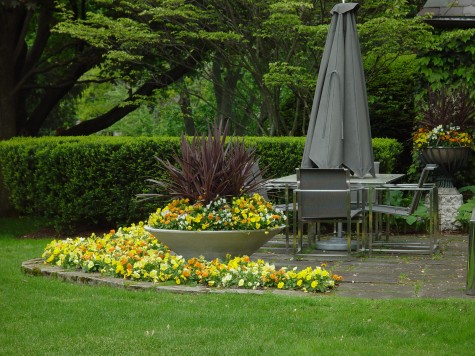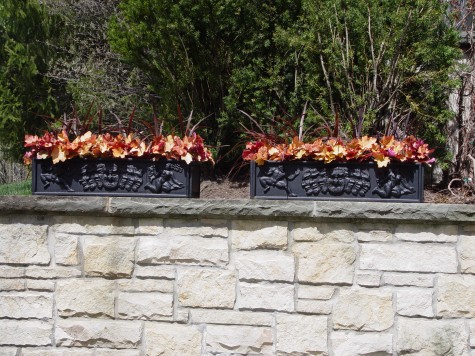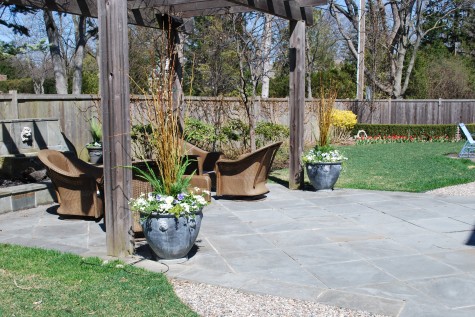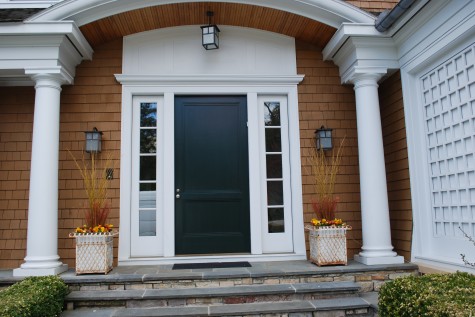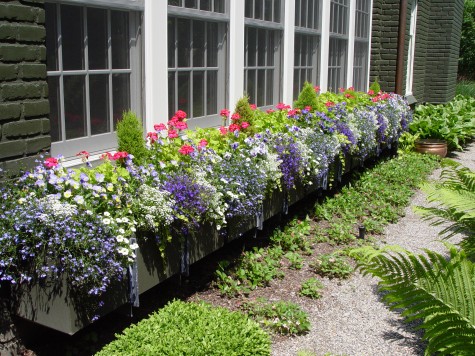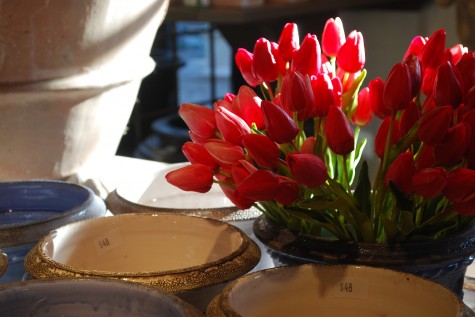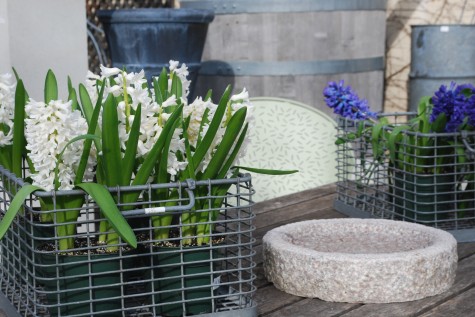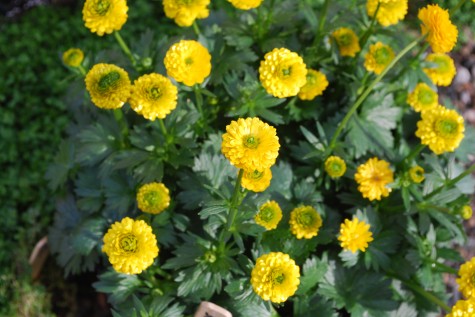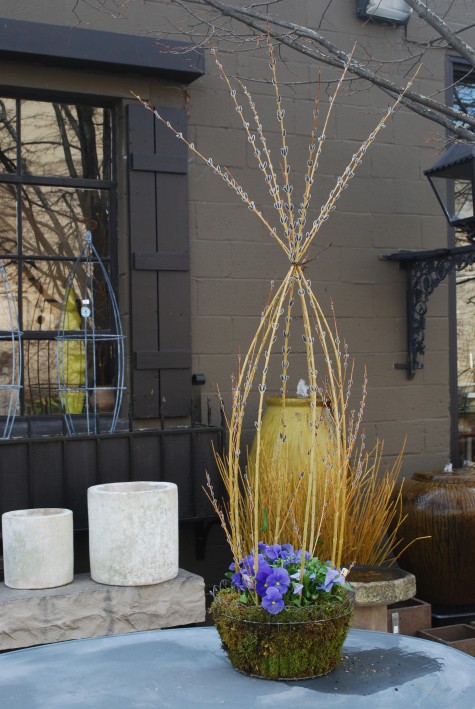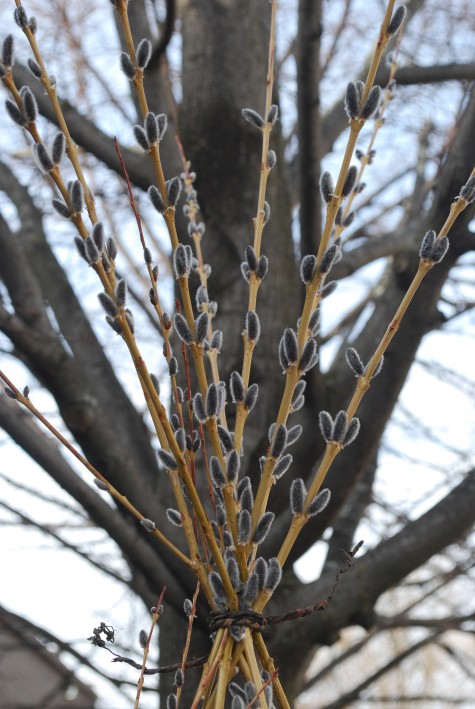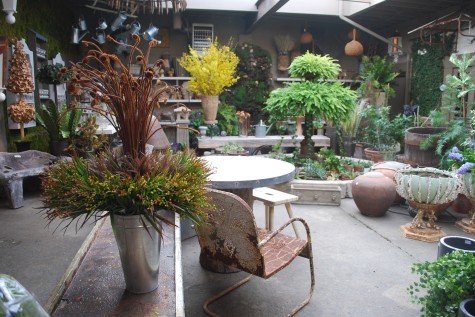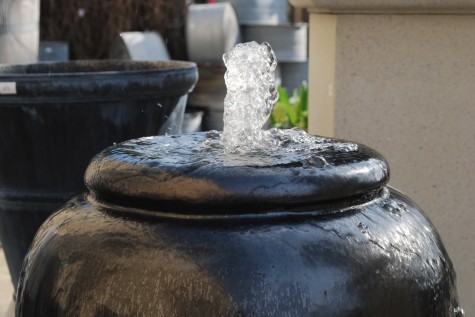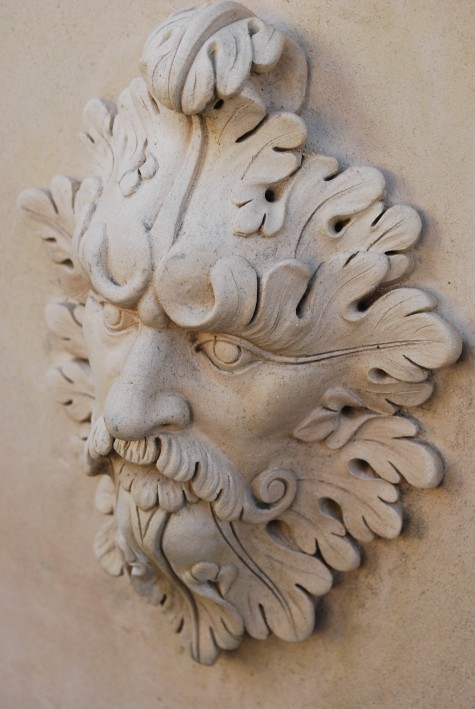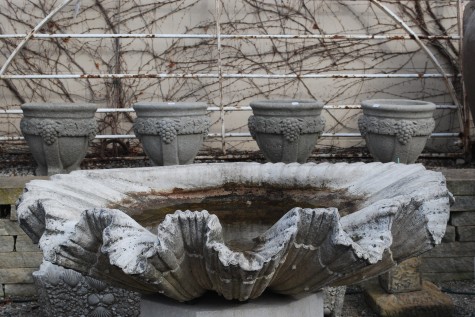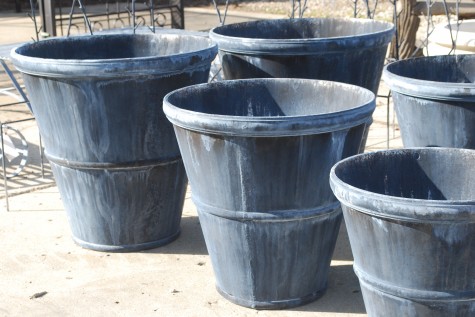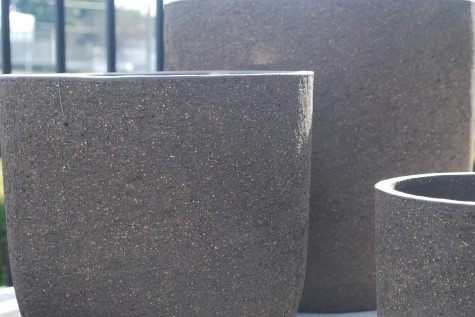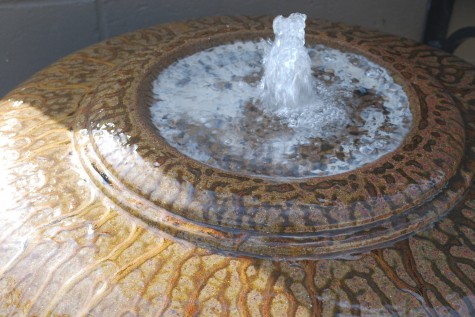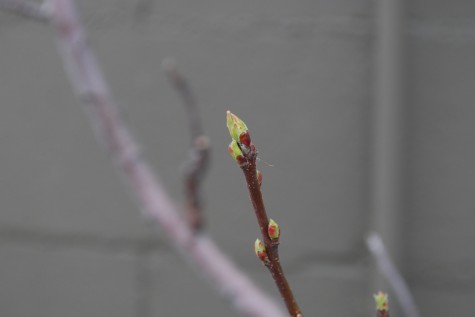 I am writing this Friday post late Saturday afternoon; sorry, it has been a busy week. The warm weather has brought in friends and clients -for a spring hello, and for spring work. I am so glad to be back to work designing. Every project has its own 3″ by 5″ card-they go on my bulletin board wall. This way, I can see everything I have going on at a glance. I get messages; “please put me on the board for….” -I like this. Green cards for design. Blue cards for design going into the build phase. Lavender cards for spring plantings. Pink cards for summer plantings. Yellow cards for parties and events. This may seen archaic to most, but it works great for me. Having a stack of design and build cards-each design project benefits the other. Design is very much about rhythm and regular engagement, and I am engaged on a number of fronts. Everything is budding-I am sure you have noticed, as I have.
I am writing this Friday post late Saturday afternoon; sorry, it has been a busy week. The warm weather has brought in friends and clients -for a spring hello, and for spring work. I am so glad to be back to work designing. Every project has its own 3″ by 5″ card-they go on my bulletin board wall. This way, I can see everything I have going on at a glance. I get messages; “please put me on the board for….” -I like this. Green cards for design. Blue cards for design going into the build phase. Lavender cards for spring plantings. Pink cards for summer plantings. Yellow cards for parties and events. This may seen archaic to most, but it works great for me. Having a stack of design and build cards-each design project benefits the other. Design is very much about rhythm and regular engagement, and I am engaged on a number of fronts. Everything is budding-I am sure you have noticed, as I have.
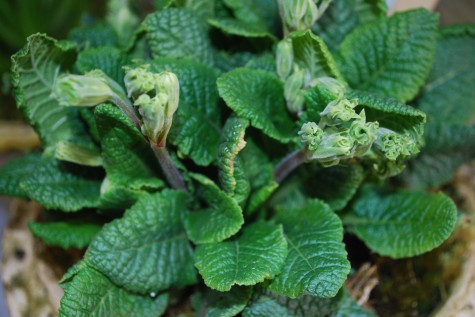 This green flowered primula “Francisca” was discovered by Francicsa Dart on a traffic island in Canada in 1995. Green flowers look good for a long time-as their petals photosynthesize just like leaves-the info from the new issue of “Gardens Illustrated”. Many older green flowered primroses have been propagated too long, with attendant viruses that weaken them. This primula is an exception- remarkable for its robust growth. Budding is about anticipation, and expectation; people and plants share this come spring. This late wait- just one of a list of rewarding things a gardener has to look forward to. This late winter wait is a vast improvement over the post holiday wait-I’ll take it.
This green flowered primula “Francisca” was discovered by Francicsa Dart on a traffic island in Canada in 1995. Green flowers look good for a long time-as their petals photosynthesize just like leaves-the info from the new issue of “Gardens Illustrated”. Many older green flowered primroses have been propagated too long, with attendant viruses that weaken them. This primula is an exception- remarkable for its robust growth. Budding is about anticipation, and expectation; people and plants share this come spring. This late wait- just one of a list of rewarding things a gardener has to look forward to. This late winter wait is a vast improvement over the post holiday wait-I’ll take it.
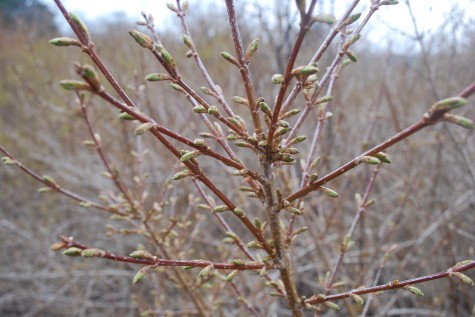 The forsythia in the outlot has budded and swelled in the twinkling of an eye; this is its habit. The recent night temps in the twenties has not damaged the emerging flowers, but it has thrown them into a cryogenic state of inanimation. I am sure this terminology would make any biologist laugh-but whatever. These buds are at a standstill. If I cut and brought these branches inside, they would pop overnight. Watching them move ahead, and then screech to a halt outdoors-a good lesson about how good timing helps any new venture.
The forsythia in the outlot has budded and swelled in the twinkling of an eye; this is its habit. The recent night temps in the twenties has not damaged the emerging flowers, but it has thrown them into a cryogenic state of inanimation. I am sure this terminology would make any biologist laugh-but whatever. These buds are at a standstill. If I cut and brought these branches inside, they would pop overnight. Watching them move ahead, and then screech to a halt outdoors-a good lesson about how good timing helps any new venture.
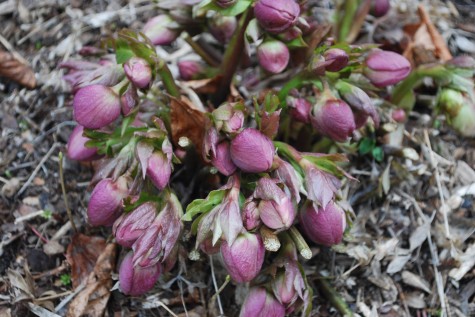 My hellebores have sent up buds very cautiously-there is something in the hellebore internal clock which hedges the bloom time bet. How plants interact with weather is incredibly interesting, and beautifully complicated. No stalks will push these buds skyward until conditions seem optimal. After all, the purpose of the flower is to make itself available for pollination, set seed, and thus insure the survival of the species. An inauspicious start out of the box doesn’t speak well for a good finish. That those flowers thoroughly enchant me; I am sure nature is rolling her eyes. Make what she will of my naivete, I like the enchanting part of spring blooming.
My hellebores have sent up buds very cautiously-there is something in the hellebore internal clock which hedges the bloom time bet. How plants interact with weather is incredibly interesting, and beautifully complicated. No stalks will push these buds skyward until conditions seem optimal. After all, the purpose of the flower is to make itself available for pollination, set seed, and thus insure the survival of the species. An inauspicious start out of the box doesn’t speak well for a good finish. That those flowers thoroughly enchant me; I am sure nature is rolling her eyes. Make what she will of my naivete, I like the enchanting part of spring blooming.
 I am so fond of willows-in any and every form. Their most amazing moves come right about now. Their branches tell you when the spring sap is rising-branches dulled and browned by winter come alive-before the leaves bud. Willow tree branches will go intensely yellow green, and glow, in early spring. These trees light up, when the season turns-like no other plant. This is a gift to the garden.
I am so fond of willows-in any and every form. Their most amazing moves come right about now. Their branches tell you when the spring sap is rising-branches dulled and browned by winter come alive-before the leaves bud. Willow tree branches will go intensely yellow green, and glow, in early spring. These trees light up, when the season turns-like no other plant. This is a gift to the garden.
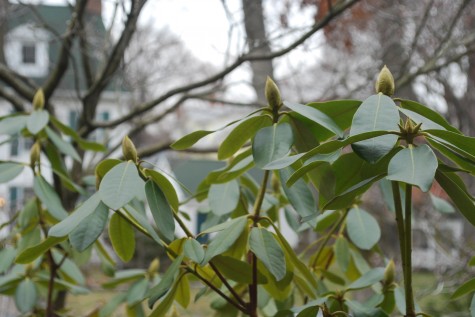 My rhododendron flower buds have been in place since last season. All winter they impassively withstood every insult the Michigan winter had to serve up. They are still tight and tightly closed. It is much too cold for opening day. A few 60 degree days does not impress them-they need to be sure winter has let go-before they let go.
My rhododendron flower buds have been in place since last season. All winter they impassively withstood every insult the Michigan winter had to serve up. They are still tight and tightly closed. It is much too cold for opening day. A few 60 degree days does not impress them-they need to be sure winter has let go-before they let go.
No one could fault Rob for lacking a sense of humor. These budding bulbs are made of wax, and have wicks. Planting them in wood trays and candle holders in natural and preserved moss; this represents a wickedly funny hope for budding. I have seen a lot of second takes at the shop this week. This budding out is all about how just about everyone is searching for any sign that the winter is over. Some have succumbed-and taken them home for spring dinner parties; our warm weather is dicey at best, until June 15.
On every gardener’s mind- is it time?

